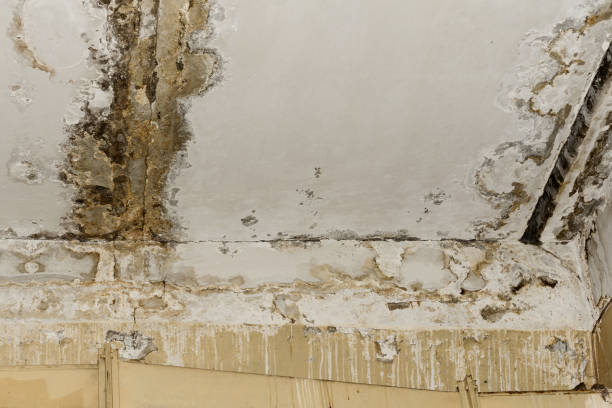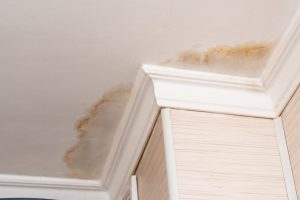What Leads to Water Deterioration in the Bathroom
What Leads to Water Deterioration in the Bathroom
Blog Article
Listed here down the page yow will discover a lot of excellent insights pertaining to How to Repair and Prevent Bathroom Water Damage?.

Water damage commonly takes place in the restroom as a result of the water utilized everyday. Sometimes, the damages could be a little mold from the shower. Other times, it's large damage on your flooring. Whatever it is, it is always good to know the cause as well as prevent it before it takes place.
This overview will undergo some of the usual reasons for water damage in the restroom. We will certainly likewise examine what you can do to stop these reasons from damaging your restroom. Allow's dive in.
5 Typical Reasons For Water Damage in Washrooms
These are the common reasons you would have water damage in your washrooms and exactly how you can identify them:
Ruptured or Leaking Pipes
There are numerous pipes carrying water to various parts of your shower room. Some pipes take water to the toilet, the sink, the taps, the shower, and many other locations. They crisscross the small location of the restroom.
Occasionally, these pipes could obtain rusty and ruptured. Various other times, human activity could trigger them to leak. When this takes place, you'll discover water in the edges of your restroom or on the wall surface.
To detect this, keep an eye out for gurgling walls, molds, or mildew. Call a professional emergency plumbing to repair this when it takes place.
Fractures in your wall ceramic tilesv
Shower room wall surface ceramic tiles have actually been specially made for that purpose. They secure the wall surface from wetness from individuals taking showers. Nonetheless, they are not undestroyable.
Occasionally, your washroom wall surface ceramic tiles fracture as well as permit some wetness to permeate right into the wall surface. This can possibly destroy the wall if you do not take any type of activity. If you observe a crack on your wall ceramic tiles, repair it instantly. Do not wait till it destroys your wall surface.
Overflowing commodes and sinks
As humans, sometimes we make errors that can create some water damage in the bathroom. For instance, leaving your sink tap on can trigger overruning and damages to various other parts of the washroom with wetness.
Likewise, a damaged commode might trigger overruning. As an example, a busted bathroom deal with or various other parts of the cistern. When this occurs, it could damage the flooring.
As quickly as you notice an overflowing sink or bathroom, call a plumber to help manage it right away.
Roofing system Leakages
In some cases, the trouble of water damage to the washroom might not come from the shower room. For example, a roofing leakage could trigger damages to the shower room ceiling. You can find the damages done by considering the water spots on the ceiling.
If you locate water stains on your ceiling, check the roof to see if it's damaged. After that, call a professional to aid resolve the problem.
Excess Dampness
It's great to have that lengthy shower and sprinkle water while you hem and haw as well as imitate you're doing, however sometimes these acts might trigger water damage to your bathroom.
Sprinkling water around can create water to head to edges as well as create molds. See how you spread excess moisture around, as well as when you do it, clean it up to stop damages.
Conclusion
Water damage to your washroom can be aggravating. Nevertheless, you can handle it if you stop a few of the causes discussed in this guide. Call an expert emergency situation plumber if you notice any type of extreme damage.
How to Repair a Water-Damaged Wall in the Bathroom
All you need to know to repair bathroom wall water damage – from identifying the water source to finishing the repair professionally. If you don’t act quickly to resolve a water damage problem, you could find that it develops into a mold issue and/or cause structural damage to your home. Follow this guide to repair your bathroom before it's too late.
All you need to know to repair bathroom wall water damage
Water damage is a common household problem, and one that, if left unrepaired, can quickly lead to structural problems and health issues. The two most likely rooms where water damage may occur is the bathroom and the kitchen – where water is used often and there is high humidity.
What is water damage?
It is easy to think of water damage as caused by a flood or leaking tap or burst water pipe. However, when water damage is assessed, there are three main categories into which water falls (as classified by the American National Standards Institute). These categories are defined as:
Category 1 Water – ‘Clear Water’
This is sanitary water. There is usually no major threat to health by washing with this water, drinking it, or inhaling if it is streaming. Most water that enters your home will be category 1 water, while most water leaving your home will be either category 2 or 3 water. It may also come from melting snow, rainwater and water tanks.
Damage caused by this type of water can usually be repaired or restored, though this doesn’t mean that there are no potential health issues.
Category 2 Water – ‘Grey Water’
This is contaminated water – sometimes considerably so – and will cause illness if consumed or if it comes into contact with your skin. Water damage in this category is often caused by overflows from toilet bowls, and damage to washing machines and dishwashers. While damaged items might still be repaired or restored after damage by grey water, it is more difficult and more expensive to do so.
If the water damage in your home has been caused by grey water, it is advisable to have repairs made by professionals.
Over time, grey water will deteriorate and become black water.
Category 3 Water – ‘Black Water’
Category 3 water, also known as black water, is highly contaminated and a great risk to health. This may contain raw sewage, heavy metals, and other toxic substances. It will smell terrible.
If this is the water that has caused damage in your bathroom, do not touch it. Stop the water flowing if possible, seal the room and call the experts: it really isn’t worth the risk of ill health and disease that could be fatal. It is very unlikely that items can be repaired or restored if they have been damaged by black water.
https://www.porterscleaning.com/blog/how-to-repair-a-water-damaged-wall-in-the-bathroom/

How to Repair a Water-Damaged Wall in the Bathroom
All you need to know to repair bathroom wall water damage – from identifying the water source to finishing the repair professionally. If you don’t act quickly to resolve a water damage problem, you could find that it develops into a mold issue and/or cause structural damage to your home. Follow this guide to repair your bathroom before it's too late.
All you need to know to repair bathroom wall water damage
Water damage is a common household problem, and one that, if left unrepaired, can quickly lead to structural problems and health issues. The two most likely rooms where water damage may occur is the bathroom and the kitchen – where water is used often and there is high humidity.
What is water damage?
It is easy to think of water damage as caused by a flood or leaking tap or burst water pipe. However, when water damage is assessed, there are three main categories into which water falls (as classified by the American National Standards Institute). These categories are defined as:
Category 1 Water – ‘Clear Water’
This is sanitary water. There is usually no major threat to health by washing with this water, drinking it, or inhaling if it is streaming. Most water that enters your home will be category 1 water, while most water leaving your home will be either category 2 or 3 water. It may also come from melting snow, rainwater and water tanks.
Damage caused by this type of water can usually be repaired or restored, though this doesn’t mean that there are no potential health issues.
Category 2 Water – ‘Grey Water’
This is contaminated water – sometimes considerably so – and will cause illness if consumed or if it comes into contact with your skin. Water damage in this category is often caused by overflows from toilet bowls, and damage to washing machines and dishwashers. While damaged items might still be repaired or restored after damage by grey water, it is more difficult and more expensive to do so.
If the water damage in your home has been caused by grey water, it is advisable to have repairs made by professionals.
Over time, grey water will deteriorate and become black water.
Category 3 Water – ‘Black Water’
Category 3 water, also known as black water, is highly contaminated and a great risk to health. This may contain raw sewage, heavy metals, and other toxic substances. It will smell terrible.
If this is the water that has caused damage in your bathroom, do not touch it. Stop the water flowing if possible, seal the room and call the experts: it really isn’t worth the risk of ill health and disease that could be fatal. It is very unlikely that items can be repaired or restored if they have been damaged by black water.
https://www.porterscleaning.com/blog/how-to-repair-a-water-damaged-wall-in-the-bathroom/
As an avid reader on How to Repair and Prevent Bathroom Water Damage?, I was thinking sharing that chunk was really useful. Do you know about another individual who is fascinated about the subject? Take a moment to share it. Thanks a lot for your time invested reading it.
Ring, relax, resolved! Report this page